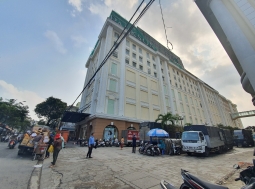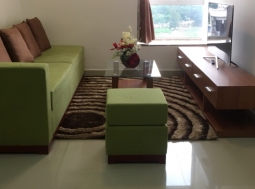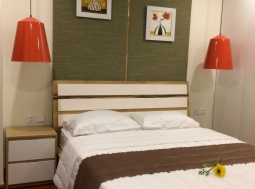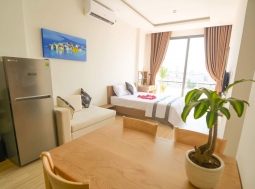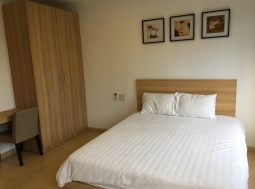10 Tips for Making Employees Love Their Office
10 Tips for Making Employees Love Their Office
You take your staff on kayaking trips. You order pizza for meetings. But who cares about the occasional extras if your workers aren't delighted to be in their workspace day-in and day-out? We reviewed the best in office amenities and policies recently covered in Inc. and on Inc.com for the highlights of companies making their offices into places their employees love coming to in the morning.
1. Stay organized.
Whether it's business plans or business cards, conference binders or marketing copy, entrepreneurs have a lot of information to track. But with so many important managerial matters on your plate, it's hard to put a tidy workspace high on your priority list. Who knows that better than the employees who work in a disorganized or cluttered office? Their productivity and motivation can suffer when everyone's not on the same page about where important information, tools, and supplies can be found. Laura Leist, president of the National Association of Professional Organizers, which is based in Mount Laurel, New Jersey, explains: "When you're talking about organizing your workspace you need to make a decision about what needs to be organized and there's five areas that you can look at." These five areas are paper, general stuff such as office supplies, your space and furniture layout, electronic information, and time management.
2. Make it comfy.
"Designing a comfortable office environment is about more than aesthetics; careful attention to design can give a boost to employee happiness. In the current economy, the focus is often on leasing office space based on price, with less attention paid to design, layout and amenities. Smart business leaders, however, think beyond the existing layout and furniture options when moving into a new office or refurbishing a space. That fresh coat of paint and new carpet your landlord gave you when you signed the lease is great, but there are other small investments of time and money that can transform your office into a more productive workspace," writes Lois Goodell, principal and the director of interior design at CBT Architects, in an Inc.com guide on creating a productive office environment. In short, making a comfortable environment takes more than a sturdy desk and comfortable chair – it incorporates quality lighting, good ventilation, and a quality heating-and-cooling system.
3. Give everyone a say.
It's an extreme example, but when Thomas Walter, CEO of Tasty Catering in Elk Grove Village, Illinois, encountered Jim Collins's Good to Great, he asked each of his employees to read it. Inc. editor-at-large Leigh Buchanan writes: "Tasty Catering formed two Good to Great councils, which make all strategic decisions for the company. Each council has eight charter members drawn from across the company—culinary workers, clerical staff, drivers. One council conducts business in English, the other in Spanish, which is the first language for about a third of the work force. At least one of the three owners—Walter and his two brothers—sits in with each group. The councils hold meetings a few days apart, and an outside translator produces copies of the combined minutes in both languages. Each month, two random employees are chosen to join the councils for the month." She quotes Anna Wollin, an account executive who joined one of the councils when they were formed, who says: "It puts us all on an even playing field. I had been with the company less than a year, and my opinion was as important as an owner's opinion."
4. Consider openness.
It's not right for every team of workers, but the trend today is to support collaboration, in all its forms: mentoring, problem solving, routine communication and information sharing. Goodell writes: "To do so, create more open spaces in the office, from workspaces with low panels that make it easier to communicate to all-day cafés where employees not only eat, but also meet to work." It's also important to consider what happens when someone in a large open office environment needs to concentrate on a big project or lead a conference call. Open spaces only work when employees have access to areas where they can focus on a specific task. One solution is "hoteling," offices that can be reserved or used at will when needed. These offices can be small, but should be highly functional. They should be equipped with good lighting, phone systems and technology necessary to complete critical tasks.
5. Make the workplace a community.
In this year's Top Small Company Workplaces, Leigh Buchanan interviewed Bill Witherspoon about his open-book management and leadership style at Sky Factory. His employees not only love the clear and open communication structure, but also love helping each other. Witherspoon explains why: "I think of our factory as a community, and service is the core of community. There are two kinds of service. One is: I do this for you, and I expect a return. For example, I provide good customer service, and I expect loyalty. The other kind of service is selfless. I do something for you without thought of a return. I help you spontaneously and without thinking about it. That second kind of service is powerful. When someone has a moment of free time, how wonderful if she automatically thinks, Now, what can I do to help someone else? At the start of our Friday meetings, the leader for that week tells an appreciative story about someone at the company and presents the person with $25. Often, the story involves an unselfish, unsolicited offer of help."
6. Focus on utility.
When the basics of a functional office work flawlessly, and when complaints regarding technology and equipment malfunctions are answered and remedied quickly, that goes a long way to making employees satisfied with their surroundings. But you'll want to go several steps further. "Companies should take advantage of the research and give thought to furniture design and how it fits the needs of employees and their work habits," writes Goodell, who also suggests the space should be wired to support Wi-Fi to maximize the space's flexibility. But don't let utility override personality: Remember, your employees spend more time at work than almost anywhere else, so "it should be a comfortable and inspiring environment," with wall colors and art that support your company's image and culture.
7. Make the office optional.
Well, sometimes. A flexible work-week came into vogue during the recession, when plenty of companies – and even municipalities – looking to cut down on office expenses implemented four-day work-weeks. Peter Vanden Bos wrote about how it worked for Emily Stoddard Furrow and Gretchen DeVault, co-owners of DVQ Studio, a Grand Rapids, Michigan-based branding and communication strategy firm DeVault founded in 2006. "We wanted to make this a different kind of business, so we decided on the four-day workweek from the get-go," DeVault says. "We've all worked in places where you get burned out easily, so we wanted to make this a place where you enjoy coming to work." It's also a way for them to distinguish their company in hiring, because they can attach a value to the benefit of having three-day weekends."
8. Make education a priority.
Did you hear that McDonald's has its own Hamburger University? Like large corporations before them, top small workplaces are adopting the university metaphor for their education efforts, which often cover not just business and technology but also nonwork subjects: ceramics, wine tasting, and more, Leigh Buchanan reports. She writes: "Last year, SnagAJob.com, a $21.8 million job-search site in Glen Allen, Virginia, offered employees 62 classes through its eclectic program, Snagger U. Classes, which are taught by in-house experts, take place during the workday and last for an hour or two. Eight to 12 employees typically show up for each class." The article goes on to describe – through the employees who have taken the courses – some of the most recent "university" offerings.
9. Consider mixing uses in a great space.
If the prices of great real estate are hindering your business from having all the open-air space it needs to grow and thrive, take a lesson from Jason Fried, who runs 37Signals. At one point in transitioning inexpensive office-spaces, he held an event, charging $300 a head, and profiting $9,000. That was three months' rent paid in one day. Fried writes: "That was a light-bulb moment. An office can be free – and even a profit center – if you start thinking about your company's byproducts." So, when Fried and co. found a beautiful raw space just six blocks from their current office with natural light and plenty of space, he signed the papers. "True to our vision, about a third of the 10,000 square feet is dedicated to teaching. We built a theater-style classroom, with 37 seats, in which we can give presentations, hold workshops, and offer training and support classes for our customers. We plan on holding the first of many regular workshops this fall," he writes.
10. Add some perks.
Okay, so this isn't directly related to the office space or congeniality in the office. But certain perks, in addition to useful and efficient amenities, can make employees feel like a million bucks – and perform like they're worth it. We compiled 10 perks we love, from free dinner to being able to bring kids to the office.
RELATED NEWS
- Office for rent in Da Nang – Outstanding office for rent in variety of standard
- Office for rent in Da Nang with Thuenhanhhon
- Office Feng Shui: Place Your Desk In The Command Position
- 7 Ways to Feng Shui a Cubicle, Desk or Entire Office
- 5 Ways That Natural Light Improves Workplace Productivity
- 5 Things About Office Lighting You Should Know
- 8 Ways To Make Your Workspace Healthier
HOT REAL ESTATE










